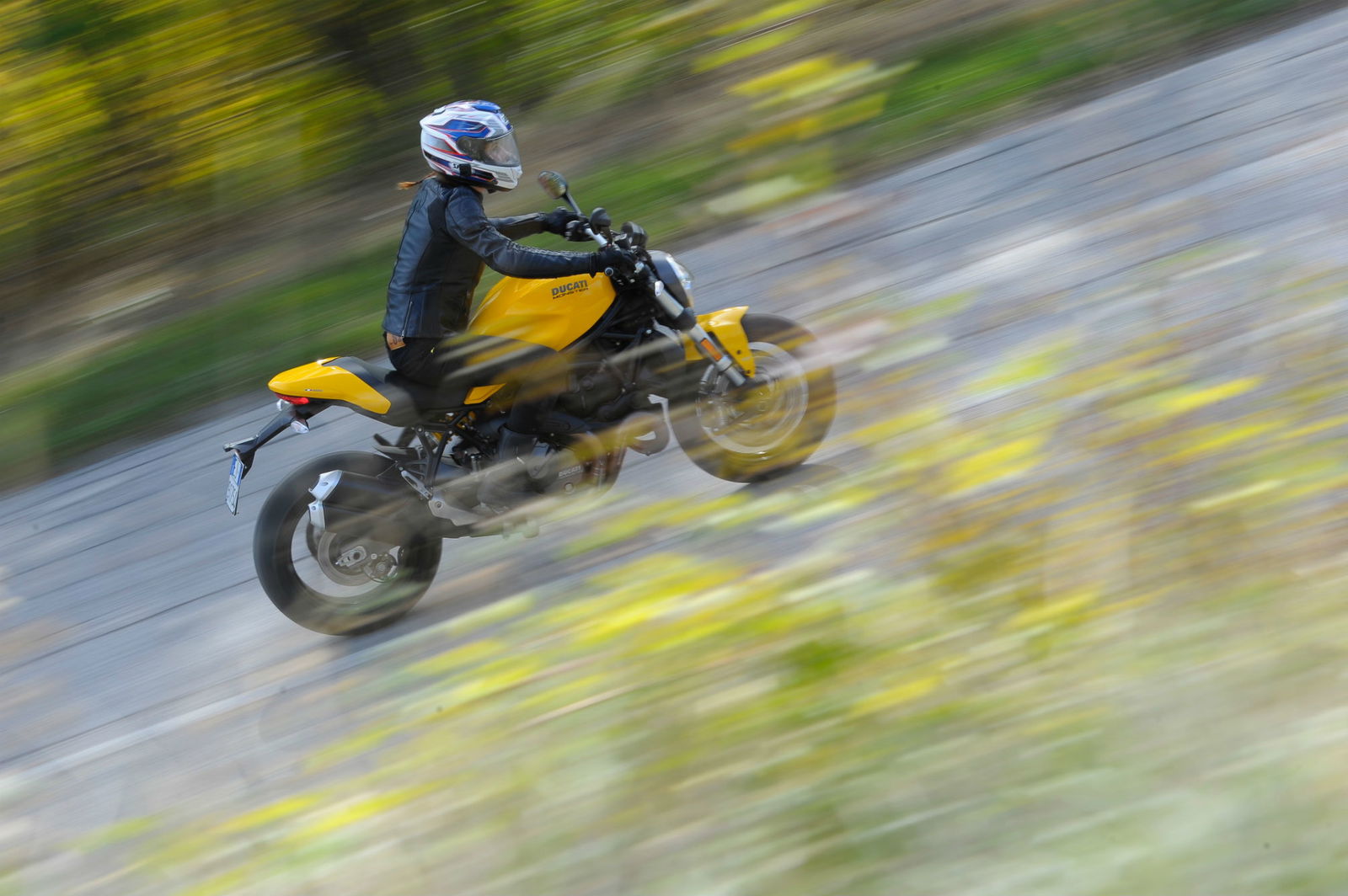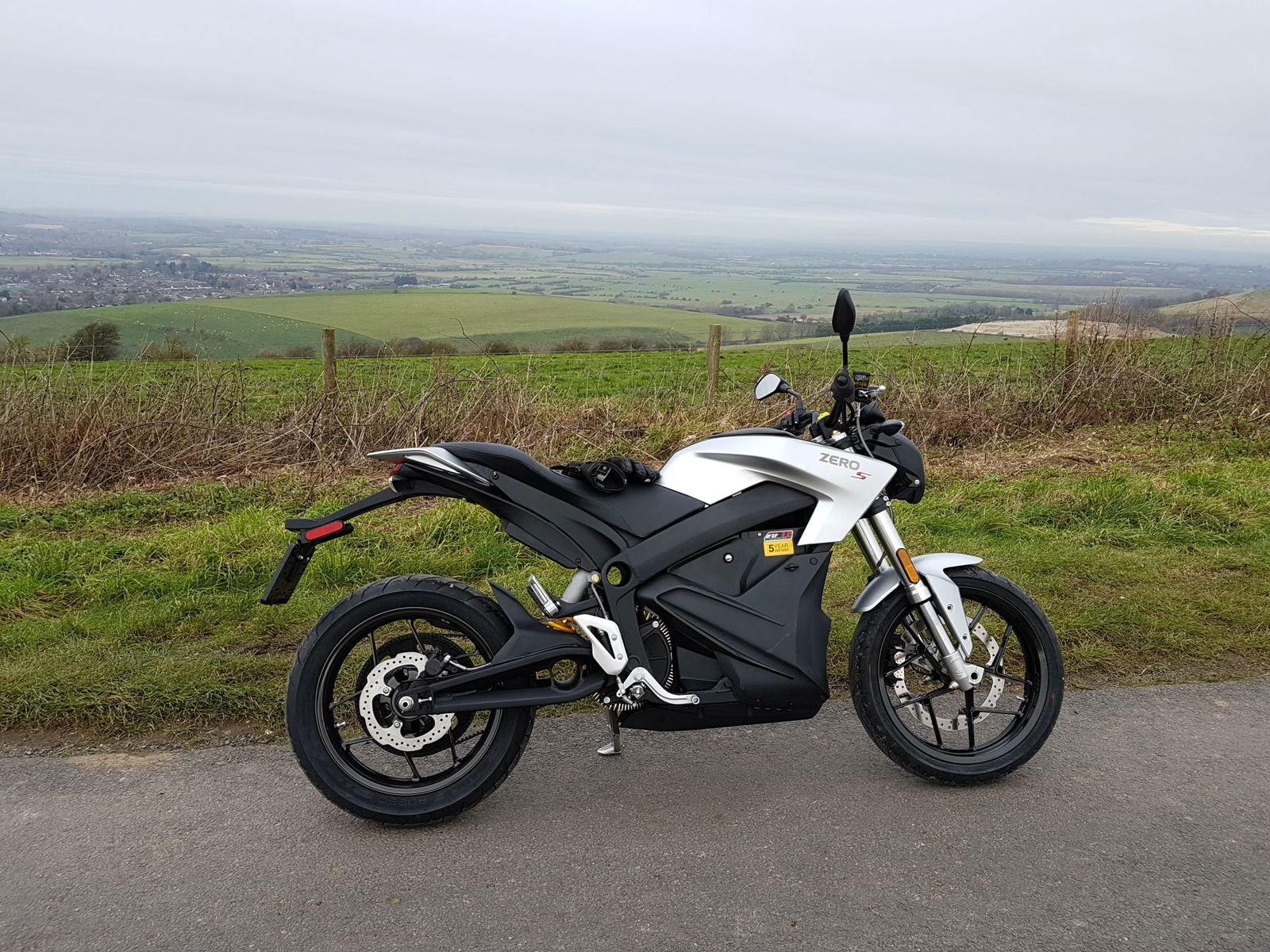First ride: Ducati Multistrada 1260 S review
There's a new engine and a host of updated tech
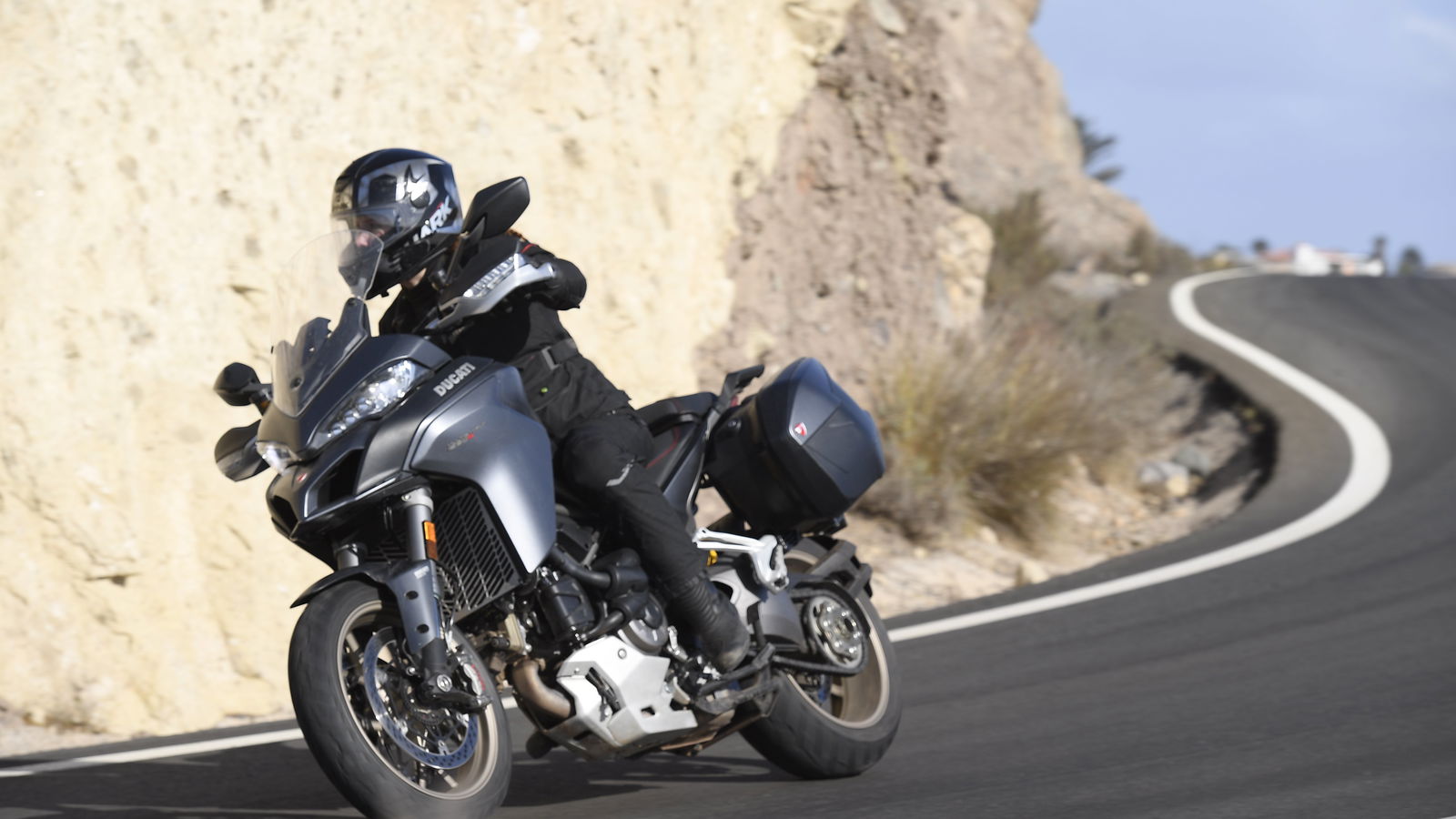
SINCE its debut in 2010, Ducati’s Multistrada has become known as a wolf in sheep’s clothing, packing the performance of a sports bike into the comfortable clothes of a tourer.
The third generation is now upon us, and at first glance, not much has changed.
But in this case looks are very much deceiving, and Ducati has in fact packed a fair amount of changes into the 2018 Multistrada, starting with the X-Diavel’s 1262cc Testastretta DVT powertrain.
That’s right, this is the new Multistrada 1260, and with this engine upgrade comes a new degree of rideability.
Due to enter dealerships in February, it will be available in four spec levels – the 1260, 1260 S, 1260 S|D-Air and the sporty, range topping 1260 Pikes Peak.
All models benefit from a host of new tech spec, including Ducati’s quick-shifter, keyless ignition and a revised TFT dash.
I rode the £17,395 1260 S on launch in Gran Canaria.
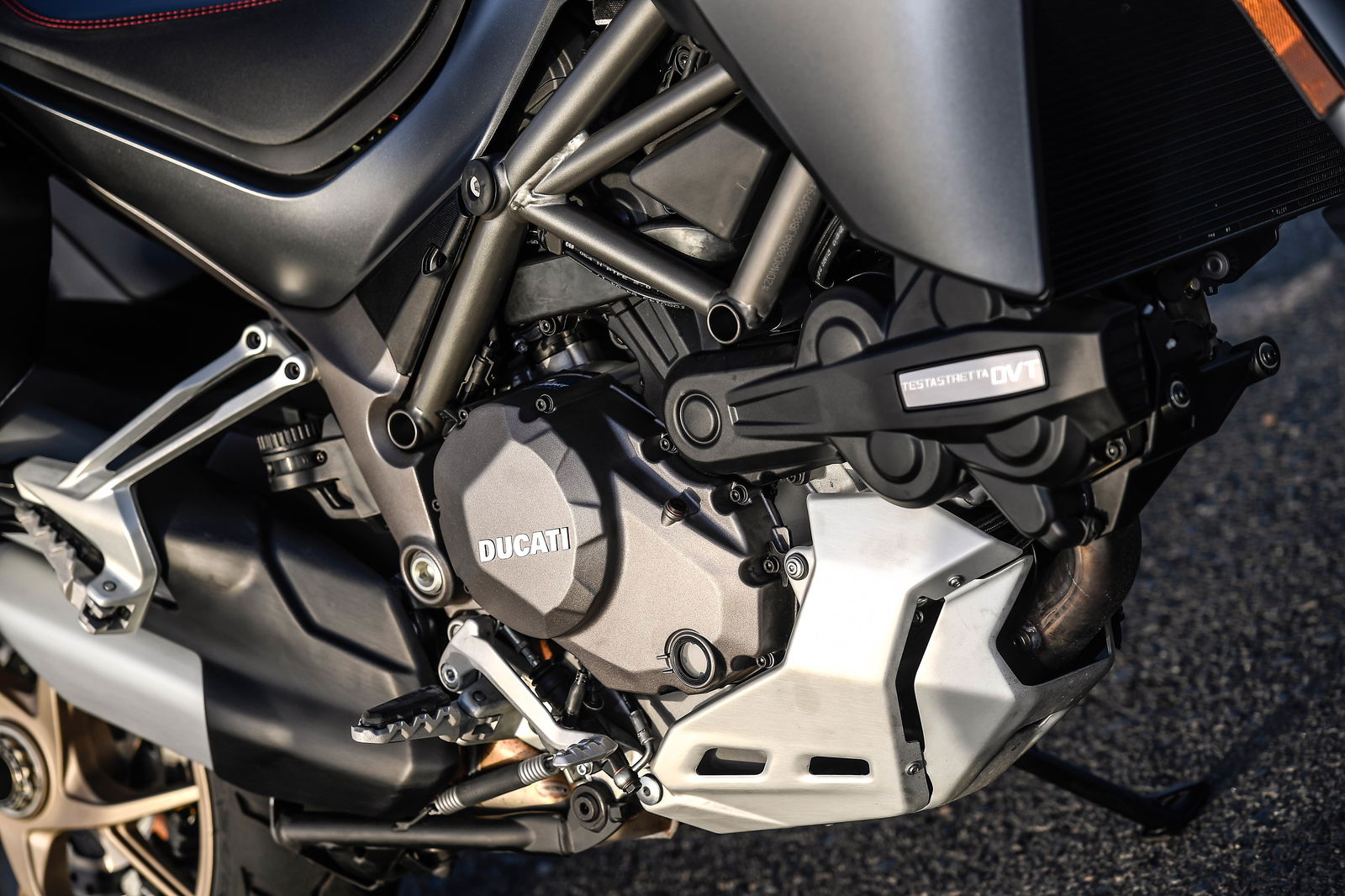
Engine:
This is the big Multistrada, but not as you know it. For 2018 Ducati has introduced the 1262cc Testastretta DVT powertrain of the X-Diavel.
With a longer stroke than the previous unit, new engine mapping and a fruity twin aluminium exhaust, this 158hp – that’s 6hp more than the Multistrada 1200 – engine is absolutely made for the new Multi.
Known for its rideability, it provides linear power from around 2,000 revs and plentiful torque, which is also available much lower down the revs than the previous unit – a claimed 85 per cent is available from 3,500 rpm, and it’s certainly noticeable.
Ducati boasts an 18 per cent torque hike over the 1200 at 5,500rpm, with a peak of 95.1lb-ft achieved at 7,500rpm.
These factors combine to make the bike much more useable than its predecessor in the low to mid-range, which is where you often find yourself in towns or traffic.
Our test route consisted predominantly of twisting mountain roads – enough bends to make you dizzy – and these second and third gear sections gave us ample opportunity to put Ducati’s claims to the test.
Some of the bends tightened up as we rounded them, but downshifting wasn’t necessary as the speed dropped, with the new Multistrada having enough grunt to comfortably accelerate out at the other end.
Torque builds more steadily than the previous unit, which makes for altogether more pleasant acceleration throughout the gears.
But this increased low-end torque doesn’t mean a compromise on top-end tug. The Multistrada retains its lofty power, aggressive acceleration and high speed thrills.
There are four riding modes of Sport, Touring, Urban and Enduro, each with their own mapping and different degrees of engine braking. Touring is noticeably less urgent than sport and Urban even more so. Our ride didn’t call for Enduro.
I mentioned shifting earlier, and it’s now been made a lot easier thanks to Ducati’s quick-shift system, derived from that of the Italian marque’s superbikes.
Providing you’re at the right revs, it makes for relatively smooth shifting. However, it’s no soft touch and does require a decent toe tap to change. On a number of occasions, I found myself in no mans land, hitting false neutrals between gears (especially fifth and sixth) after too gentle a movement.
Equally, this quick-shifter makes finding neutral slightly more difficult, and during the test I’d often find myself jumping between first and second a number of times before getting there.
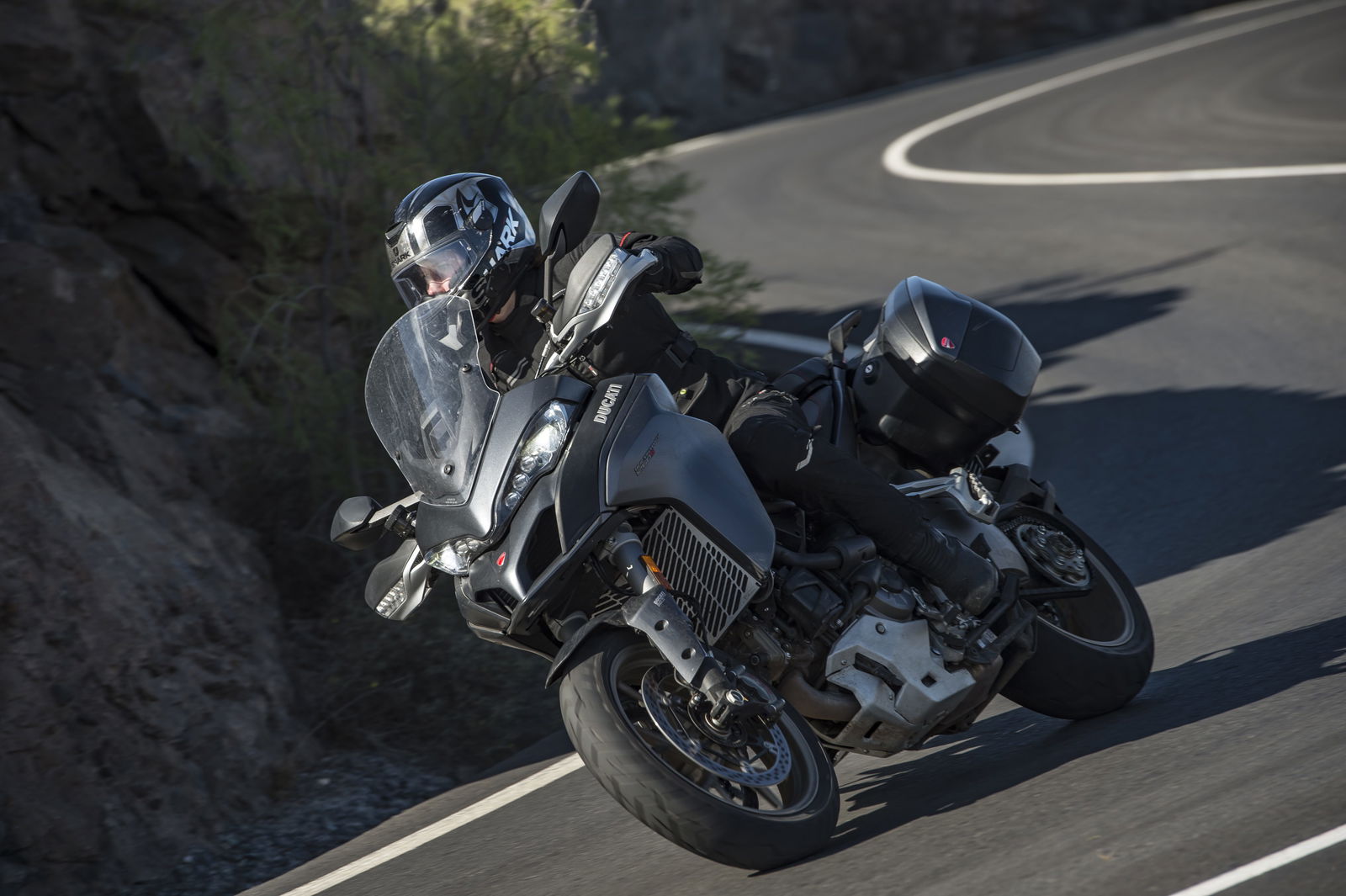
Handling:
The Multistrada 1200 was pretty competent when it came to handling, although top-end wobble was reportedly an issue, especially under load – with panniers and a passenger, for example.
Ducati claims to have improved this high-speed stability, thanks to a 48mm longer swingarm, 5mm longer trail and 1 degree increased rake, which in total makes for a 1,585mm chassis – that’s 56mm longer than the outgoing model. While our test route didn’t give us much opportunity to put this to the test, the bike does feel steady and balanced at motorway speeds (albeit only one up).
What I can say is that these changes do not compromise the Multistrada’s agility and flickability. It’s very manoeuvrable, both at speed and a standstill and has an impressive turning circle, too.
There’s three seat heights to choose from – standard height of 845mm, standard in the lower setting at 825mm and the low seat option, which takes it to 805mm.
I mostly rode in the latter two configurations, and can’t say that there was much difference in it. This certainly isn’t a bike for shorter riders, as at 5ft7 I was still far off flat feet on the lowest seat. This made wheeling the bike backward while sitting on it quite difficult.
With wide bars and an upright riding position, the Multistrada is comfortable. However, my arms ached with the lower seat fitted and the ergonomics felt slightly off.
In bends, I found myself leaning forward into the wide bars. The Multistrada may not be a sports bike, but you sure can ride it like one.
Suspension:
The 1260 S gets Ducati’s semi active Skyhook Suspension, with a 48 mm electronic Sachs DSS Evo fork and electronic Sachs DSS Evo shock, which proves firm and sporty (I set it to rider plus panniers to increase the preload), yet not boneshaking over bumps.
The suspension damping automatically stiffens or softens depending on a number of factors, including mode, speed and lean angle.
With so many levels of suspension adjustment, there really is something to suit every terrain and riding style.
The standard 1260 and the Pikes Peak versions share mechanically adjustable Öhlins suspension – the latter for weight saving purposes and the former for cost reasons.
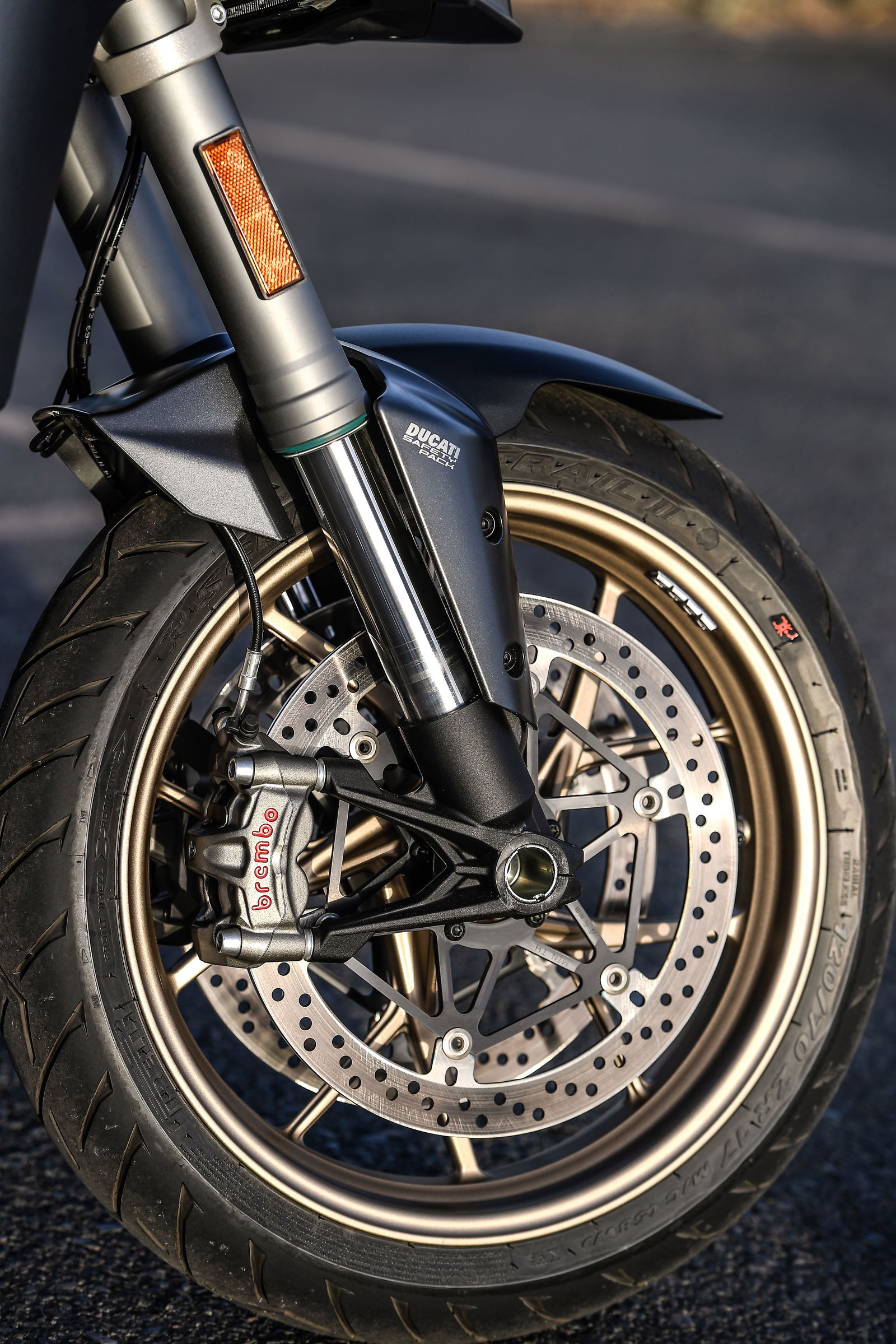
Brakes:
As would be expected from Ducati, Brembo brakes feature across the Multistrada range – in the form of M4.32 radial monobloc callipers with 320 mm discs on the standard model and sharp M50 radial monobloc callipers 330 mm discs on the S, S D|Air and Pikes Peak.
There’s also cornering ABS, traction control – which went mad on a couple of patches of rough ground, lighting the dash up like a Christmas tree – wheelie control and vehicle hold control, all of which are extremely intuitive and unobtrusive.
Unfortunately, the ‘vehicle hold control’, which is activated by pulling on the brake lever when at a standstill, only stays on for ten seconds before deactivating and letting the bike roll backwards. Considering most traffic lights stay red for more than 10 seconds, this isn’t ideal.
Equipment:
To the untrained eye, the new Multistrada differs very little from its predecessor. However, there are subtle changes that set the two apart – a metal ‘Testastretta DVT’ panel on the cam covers, a new grab rail (inherited from the Multistrada Enduro) and, if you’re really hot on your details, redesigned ‘cheek’ panels.
In the cockpit, there’s a few more changes – an updated TFT dash, which is standard on the S model and up. On this dash, and using the ‘more intuitive’ handlebar buttons (they look the same as before), the rider can switch between the riding modes, preload settings (rider, rider + passenger, rider + luggage, rider + passenger + luggage) and delve into more complicated suspensions adjustments.
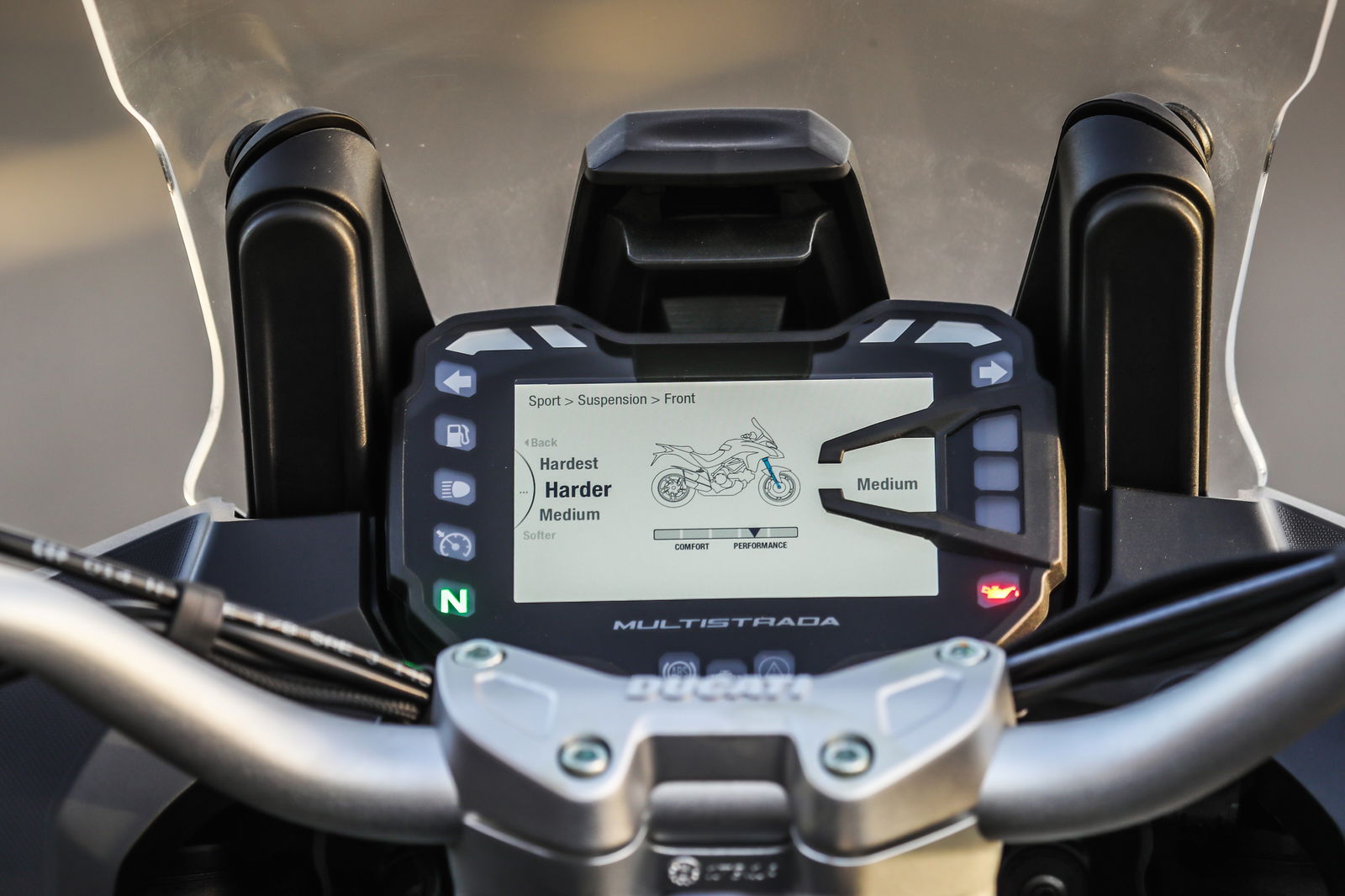
While some of these functions are fairly easy, others require more than just a touch of a button, something not advisable on the go
And while it looks no different, the 1260 is packed with additional kit over previous model.
There’s a new tyre pressure monitoring system and keyless ignition across the range – although make sure you keep the key to hand as it is required to open the fuel cap and panniers. One neat aspect of Ducati’s keyless ignition system is the Recovery Unlock System. Hidden under a plastic panel at the front of the bike is a button, which, if the rider manages to lose or forget their keys, allows them to enter a four-digit code and start the bike. Of course, this is only a short-term solution as it doesn’t give access to the tank.
An LED headlight with cornering lights is also standard on S, S D|air and Pikes Peak, which unfortunately we didn’t get to test out as we rode only in the daylight.
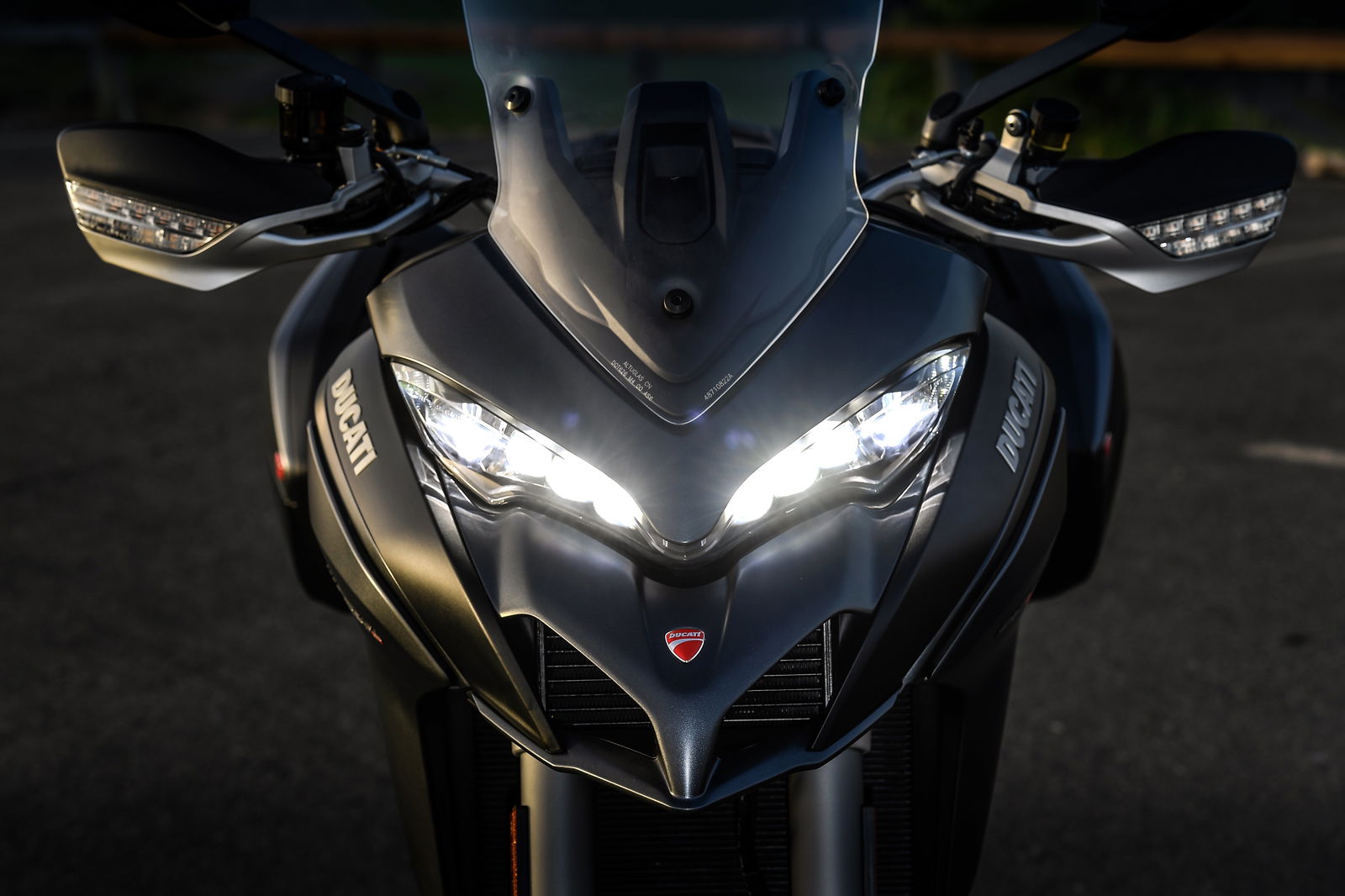
If you feel like you haven’t spent enough already, there’s always the options of four accessory packages, which can be chopped and changed as the rider chooses.
We rode the 1260 S with the Touring Pack fitted – this package costs an eye watering £18,349.
It includes heated grips and a centre stand – which surprisingly aren’t standard on the bike – and panniers.
For the Multistrada’s price, you’d think Ducati would make the screen adjustment electronic – the Triumph Tiger has had one since 2012 after all. That said, there’s nothing wrong with the manual unit, which I used mostly in the lower setting.
Ducati will also be launching its free Link App at the same as the bike. Via bluetooth, the rider will be able to access and adjust parametres, riding set up and find out ride statistics.
We like:
Nothing says ‘aggressive’ more than the Volcano Grey paintjob – easily my favourite of all the Multistrada colours. It looked great against both the grey fog and the blue sky.
We don’t like:
The quick-shift could do with some refinement to avoid false neutrals, and the bike could be made more accessible for smaller riders.
Verdict:
The Multistrada occupies a strange spot in motorcycling – the sports adventure category.
Unlike ‘adventure,’ it’s reserved for the truly impressive high performance machines, and not oversaturated with dressed up commuter options.
In fact, it’s pretty much a three bike segment, with the Multistrada 1260 sharing a stage with BMW’s £12,650 S 1000 XR, and the £15,999 KTM 1290 Super Duke GT.
If you’re torn between a sports bike and an adventure, one of these three will be your perfect compromise.
And the Multistrada is easily the most stylish option, offering a performance-orientated ride in high comfort and with a vast array of tech, albeit for an admittedly eye-watering price.
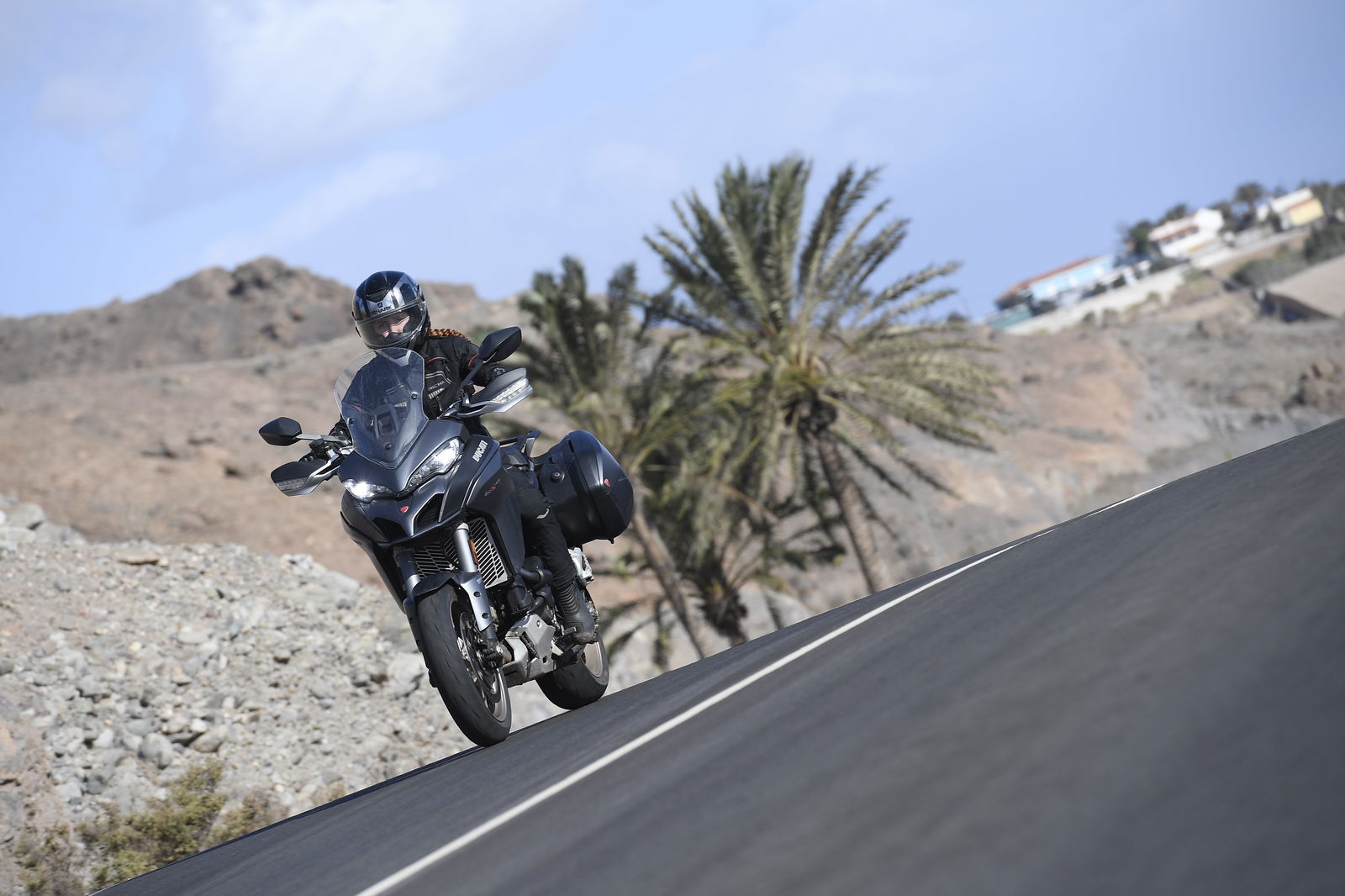
Specs:
Model tested: Ducati Multistrada 1260 S in Volcano Grey
Price: £17,395 (£18,349 with Touring Pack)
Engine: 1,262cc L-Twin Testastretta DVT
Power: 158 hp
Torque: 95.1 lb-ft
Kerb weight: 235kg
Seat height: 825 – 845mm
